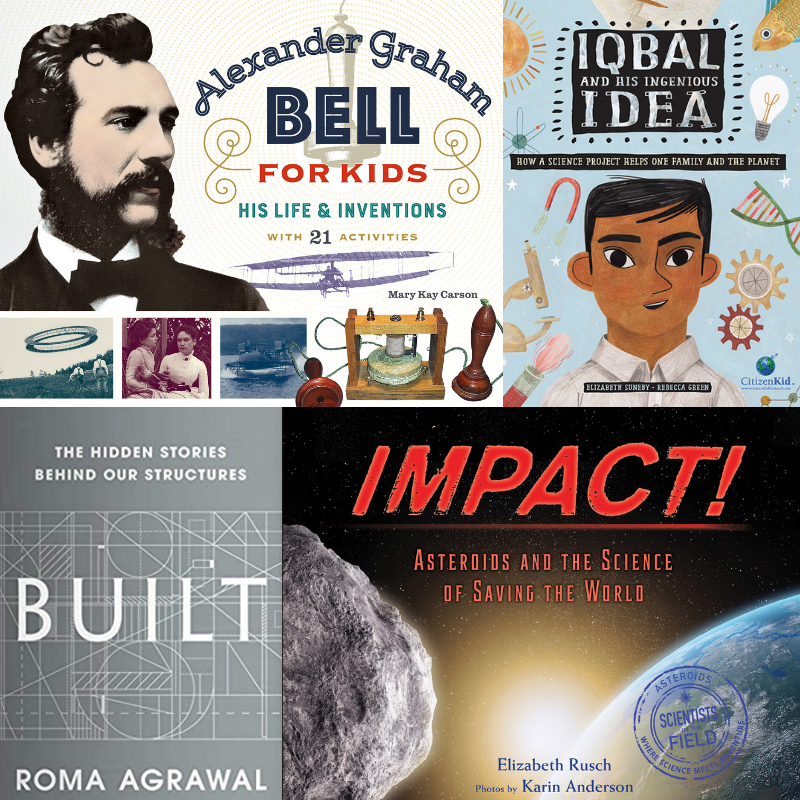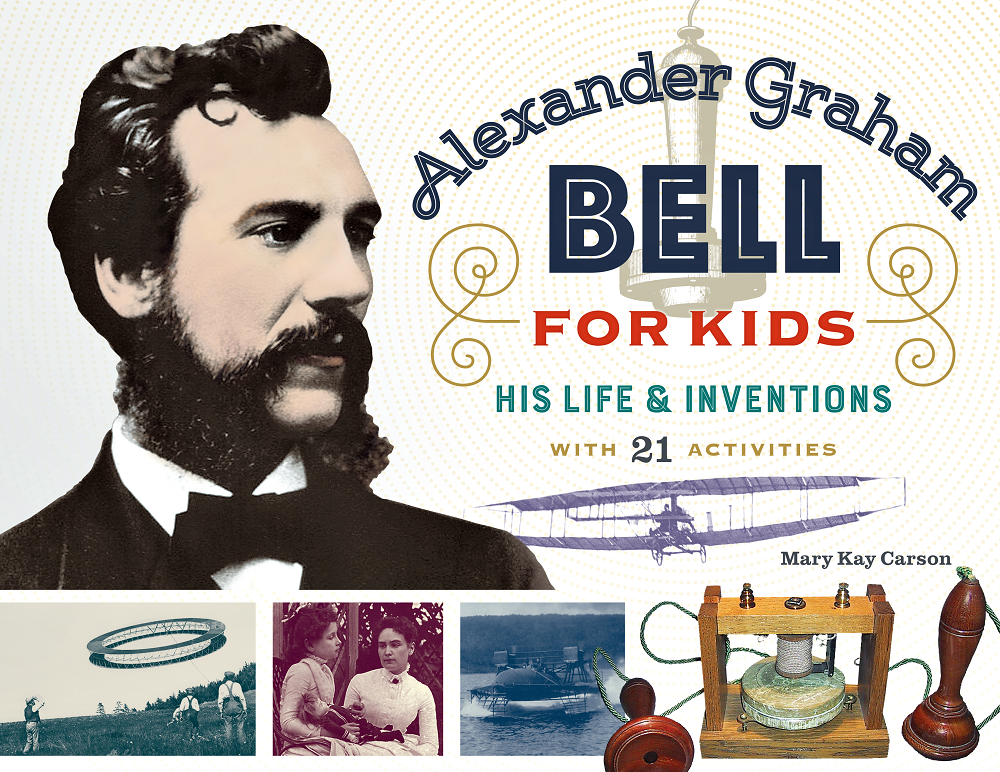2019 AAAS/Subaru Children’s Science Book Prize Winners Announced
A Bangladeshi boy’s sustainable science project; the world of asteroid research; the rich history of the buildings surrounding us; and the life of a world-famous inventor are the stories told by the winners of the 2019 AAAS/Subaru SB&F Prizes for Excellence in Science Books.
The winners of the 2019 AAAS/Subaru SB&F Prize for Excellence in Science Books exemplify outstanding and engaging science writing and illustration for young readers. Sponsored by Subaru of America, Inc., the prizes to recognize recently published works that are drawn from and inspired by sound science.
"Through quality science writing and illustration, children can be inspired by the work of scientists and be awed by the world around them," said Rush Holt, CEO of AAAS and executive publisher of the Science family of journals.
Judged by panels of librarians, scientists and educators, the winning works feature accurate science and cannot perpetuate misconceptions or stereotypes. The criteria also require that each book be age-appropriate: For the youngest readers, a winning picture book should pique their curiosity about the natural world around them; for older readers, books should encourage the discussion and understanding of scientific ideas. Hands-on science books for any age must include inquiry-based activities that encourage problem-solving skills.
"We are proud to work with the AAAS to provide the younger generations the tools they need to be inspired to explore and prepare for the many opportunities a passion for science can lead to," said Thomas J. Doll, President and Chief Executive Officer, Subaru of America Inc. "Through the Subaru Loves Learning platform and our partnership with AAAS, Subaru continues its commitment to education and the field of science by helping recognize some of the most influential and informative works of the year."
The prize was launched in 2005, when AAAS and Subaru partnered to honor five authors and one illustrator for their contributions to the ever-growing genre of science books for children. The following year, AAAS and Subaru began recognizing authors and illustrators for recently published individual works. Awards are given in four categories: children’s science picture book, middle grades science book, young adult science book and hands-on science book. The prizes are presented to the authors, except in the case of the picture book award, which is given to both the author and the illustrator.
This year’s winners receive a cash prize, a commemorative plaque and will be honored at the AAAS Annual Meeting in Washington, D.C., in February.
The Winners:
Children’s Science Picture Book:
Iqbal and His Ingenious Idea: How a Science Project Helps One Family and the Planet, by Elizabeth Suneby, illustrated by Rebecca Green. Kids Can Press, 2018.
Iqbal, a young Bangladeshi boy, is worried about the health of his mother and baby sister. They have developed coughs from the smoky fire inside their home over which his mother cooks the family’s meals during monsoon season. With help from his teacher and his older sister, Iqbal sets out to design a smoke-free solar cooker. It is an innovation driven by concern. Yet, it just might earn him a prize in his school’s sustainability-themed science fair. The fictional tale of Iqbal is accompanied by a glossary of Bengali words used throughout the story, details about clean cookstoves and instructions for creating a solar cooker with a pizza box and aluminum foil – features to deepen young readers’ understanding of Iqbal’s innovation and spur their interest in discovery.
Elizabeth Suneby is an experienced marketing communications consultant and writer for start-up and established organizations, and over the last 12 years, also an award-winning author of books for children and teens. Each of her books inspires readers to find their voice and believe that they can make the world a better place.
She wrote Iqbal and His Ingenious Idea: How A Science Project Helps One Family and the Planet to raise awareness about the health and environmental consequences of three billion people cooking with stoves that burn solid fuels. She learned about this pervasive issue when writing Razia’s Ray of Hope: One Girl’s Dream of an Education, a true story of a girl who longed to attend a new girls’ school outside of Kabul Afghanistan, founded by two women from Boston where Elizabeth lives. One of the founders is a friend of Elizabeth’s who lost her husband on a 911 plane and is committed to educating the next generation of girls to stop the cycle of violence born out of illiteracy. Both titles are part of the CitizenKid series published by Kids Can Press. Look for her ninth book to be published soon, No Room for A Pup!, a thoroughly modern twist on a venerable Yiddish folk tale that highlights the importance of gratitude.
A graduate of Brown University (where she never took a science course) Elizabeth and her husband Per are the proud parents of two recent college-graduate scientists: A son who majored in physics and a daughter in biochemistry! Does the science gene skip a generation?
Rebecca Green is an American illustrator and author who’s work can be found in children’s and middle grade books, editorial projects, galleries and more. She currently lives in Osaka, Japan.
Middle Grades Science Book:
Impact! Asteroids and the Science of Saving the World, by Elizabeth Rusch. HMH Books for Young Readers, 2017.
In this nonfiction work, author Elizabeth Rusch guides middle-grade readers into the world of asteroid research. Shadowing several different scientists, Rusch illuminates the diverse work they pursue, from understanding asteroids’ origins and tracking asteroids in space to examining the craters that meteors have left behind on Earth. Impact! also includes the gripping story of a recent meteor encounter – the Chelyabinsk meteor explosion above Russia in 2013 – and explores possible methods that future scientists might use to divert an asteroid, should one threaten our planet.
Elizabeth Rusch is an award-winning author of 15 books for young readers and more than 100 magazine articles. Her wide-ranging passions include astronomy, volcanology, invention, political science, art, music, history, nature and mud. She is inspired by stories of exploration and discovery, stories that have been overlooked by history, and stories that grapple with persistent questions. Whether writing fiction or nonfiction for children or adults or teaching workshops, she hope her work opens doors, opens minds, opens possibilities.
Young Adult Science Book:
Built: The Hidden Stories Behind Our Structures, by Roma Agrawal. Bloomsbury USA, 2018.
Author and structural engineer Roma Agrawal takes a sweeping look at how our built environment has come to be, tracing the evolution of our structures from mud huts to modern skyscrapers – including London’s Shard building, the striking, pyramid-shaped glass tower that Agrawal helped design. In Built, Agrawal takes readers on a tour of engineering throughout time and across continents, from deadly bridge collapses to the surprising materials used in such iconic structures as the Great Wall of China and the Taj Mahal.
Roma Agrawal is a structural engineer who builds BIG—bridges, sculptures, train stations, and skyscrapers, including the Shard, western Europe’s tallest tower. A promoter of technical careers to young people, she has advised policymakers on science education. Her awards include the Royal Academy of Engineering’s Rooke Award and an MBE for services to engineering from the Queen. She lives in London.
Hands-on Science Book:
Alexander Graham Bell for Kids: His Life & Inventions With 21 Activities, by Mary Kay Carson. Chicago Review Press, 2018.
This exploration of the life of telephone inventor Alexander Graham Bell is no ordinary biography. Mary Kay Carson highlights Bell’s contributions beyond his most famous invention. Bell’s creation of an early version of the phonograph and the metal detector, his research on airplanes and hydrofoil boats, and his work teaching deaf and hearing-impaired students, including Helen Keller, are all examined. The book includes sidebars that explain the scientific principles behind his inventions and 21 hands-on activities related to Bell’s life and work. Readers can learn how to communicate with American Sign Language, create a telegraph out of a pie tin, fly a tetrahedral kite and more.
Mary Kay Carson began her writing career working on the upper-elementary classroom magazine SuperScience at Scholastic in New York City. Carson has been a full-time freelance writer for twenty-five years and is now the author of more than fifty books for kids and teachers about space, weather, nature, and other science and history topics. She’s authored six titles in Houghton Mifflin Harcourt’s esteemed Scientists in the Field series, including Inside Biosphere 2, winner of a 2016 Green Prize for Sustainable Literature, and The Bat Scientists, an ALA’s 2011 Notable Children’s Books for Middle Readers. Her book Exploring the Solar System was the 2009 recipient of the American Institute of Aeronautics and Astronautics Children’s Literature Award. The State Library of Ohio selected Beyond the Solar System as a Choose to Read Ohio book for 2015 and 2016.





![AAAS_Subaru_Logo[RGB].png](https://images.squarespace-cdn.com/content/v1/5a29b2daa803bb196248793d/1529621186903-UNAZZEY1QQWCHDZSEOU6/AAAS_Subaru_Logo%5BRGB%5D.png)